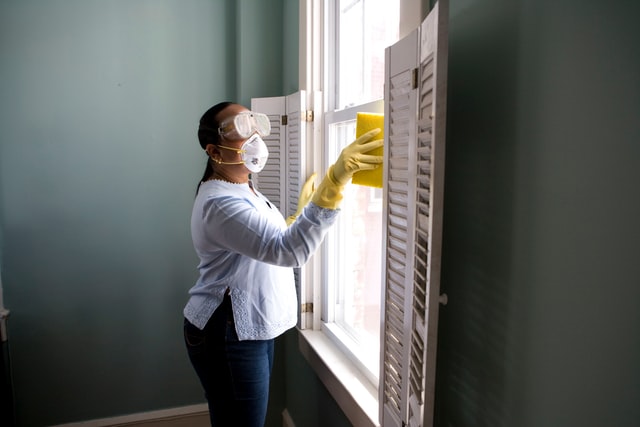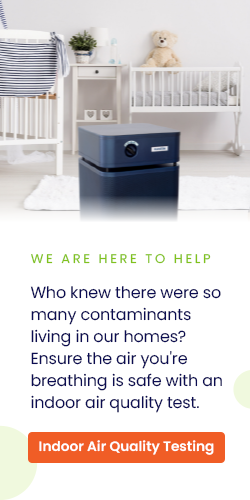Indoor air quality testing can be an incredibly important part of a household’s health. However, many people don’t understand just what’s tested. And, why it’s important to look for certain things. This can lead to people not knowing if someone can take care of their air quality issues. Or, tested by a professional, leading them to neglect their environment. This can lead to pushing aside certain issues until they become too big to ignore. To demystify the process, here’s what you can expect to be taken care of when you call an air quality expert.
VOC Particles
Volatile organic compounds (VOCs) are noxious vapors that come from various materials emitting gas. Some of these materials include freon, acetone, formaldehyde, and benzene. These often come from household chemicals (like paint) and materials, and in large quantities. Also, they are usually combined with a long period of exposure. Plus, they can become carcinogenic and result in other poor health outcomes. If you do utilize these materials on a regular basis, be sure to take caution. And, of course, keep your environment well ventilated.
CO2 Levels
Carbon dioxide is a naturally occurring gas that can nonetheless be dangerous to anyone exposed to a high enough level of it for a long period of time. CO2 is measured as a tracer gas, to determine the outdoor air ventilation (dilution air) rate in an occupied space. People exhale CO2 (at an average concentration of almost 40,000 ppm), and therefore are used as the source of the tracer gas (although CO2 may be injected into an unoccupied space as an alternative test method). High CO2 levels indicate inadequate or closed return air ducts.
Measuring CO2 concentration is one of the most practical investigative tools available to a practitioner for determining that specific spaces get adequate ventilation. Building design may provide for appropriate ventilation on paper, but in the real world the actual delivery of dilution air to specific occupied areas often doesn’t achieve design goals or is disrupted, to the detriment of the occupants of those specific “problem” spaces.
Occupants may experience health effects in homes where there’s elevated CO2, but the symptoms are usually due to the other contaminants in the air that also build up as a result of insufficient ventilation. At high levels, the carbon dioxide itself can cause headache, dizziness, nausea and other symptoms. Keeping levels less than 700 ppm above the outdoor air concentration is an indication that you are bringing sufficient outdoor air into the environment and will help control other pollutants at acceptable levels.
Biological Contamination
Toxic mold, bacteria and viruses cause adverse health effects, especially with prolonged exposure indoors. Occupants should control indoor conditions to discourage biological contamination. There are a few easy ways to control these toxic pollutants. First, identify and eliminate known known moisture sources. Reduce overall humidity in the home with proper dehumidification and conditioning. Ideal humidity indoors should read between 35-45%. Humidity readings above 55% will increase the levels of indoor mold spores, especially Aspergillus and Penicillium type mold. Occupants should conduct routine housekeeping using a functional HEPA filter vacuum cleaner. Running a medical grade air purifier is a simple way to rapidly eliminate airborne biological contamination. If you’re still not sure about the healthiness of your home hire a professional who has experience with indoor quality testing to identify contaminants and explain how to remove these toxins from your home.
Silica Analysis
Construction workers cutting and building with quartz found in rocks, granite, and other materials typically cause silica dust. You can also find silicates indoors from dirty air ducts, sand and dirt particles imbedded in carpeting along with cement from basement. We often consider these particles as a carcinogen, and they can potentially cause severe lung damage. While employees who work around this material typically follow strict regulations while handling it, you may want to have your building inspected for any residual dust if you have reason to believe that recent construction may have left it in the air.
Testing For Gases
Some common yet harmful gases that air quality testing typically seeks include
- Radon
- Ozone
- Ammonia
- And various combustion byproducts
Many of these gases can have natural causes or come from some sort of leak. You should address them immediately if there’s suspicion of contamination.
Secure Your Air Quality Today with IndoorDoctor
You deserve quality air that’s free of the many possible contaminants that can ruin your day or make you seriously sick. Our experts at IndoorDoctor will do their best to ensure that you get service that not only identifies any possible air quality issues in your home but provides the steps to take care of it. To talk to one of our experts, contact us through our online form or call 800.466.1522.






